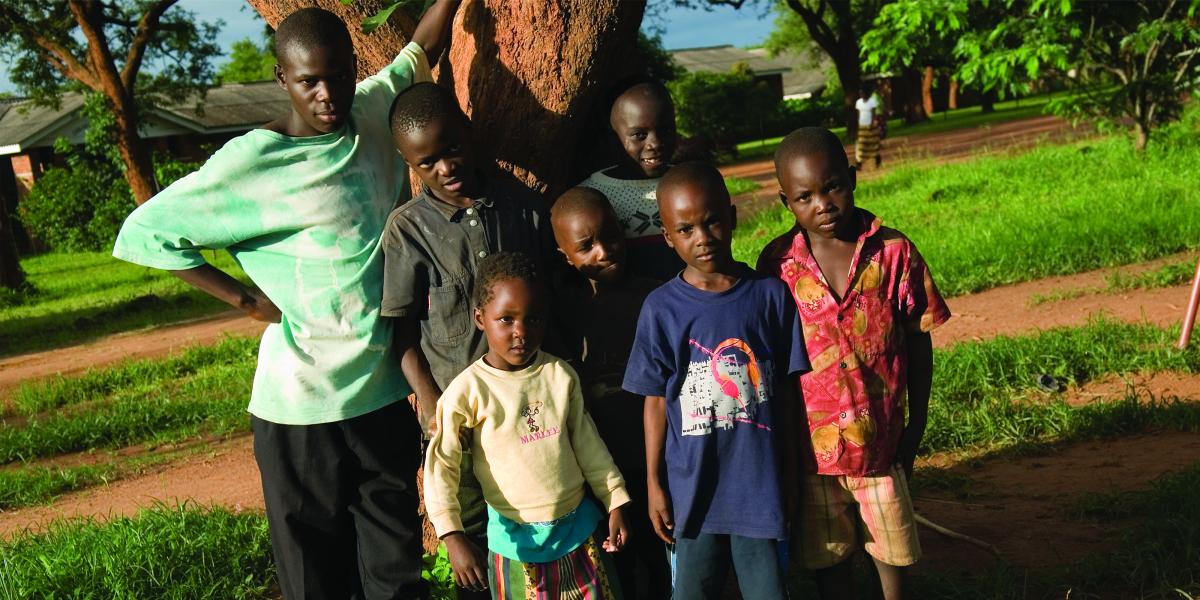Love Thy Neighbor: A New Malaria Vaccine
The vaccine cannot directly protect you from malaria—but it might protect your family, neighbors and yourself from becoming infected again. Would you get the shot?
Bloomberg School researcher Nirbhay Kumar and colleagues are counting on the altruism—and foresight—of those who live in malaria-endemic areas to be receptive to such a vaccine. “This vaccine requires education,” says Kumar, professor in the W. Harry Feinstone Department of Molecular Microbiology and Immunology and in the Johns Hopkins Malaria Research Institute.
In a study published this summer in PLoS ONE, Kumar, PhD, and colleagues detail their steps toward creating a transmission-blocking vaccine aimed at malaria caused by Plasmodium falciparum, the predominant and most lethal malaria parasite in the world. The vaccine takes a community-based approach— it won’t offer any direct protection from malaria in the vaccinated person, but it would prevent the malaria parasites within that person from infecting anyone else through a gradual malaria transmission reduction process.
“This is real public health,” says Kumar.
The linchpin of this vaccine is a P. falciparum-specific protein known as Pfs48/45. The protein prompts the human host to produce antibodies that essentially neuter the parasite. The host remains infected, but passes on, when his blood is next ingested by a mosquito, P. falciparum gametocytes that are unable to reproduce in the mosquito’s midgut. This undermined fertility halts the transmission cycle. Days later, when the mosquito carrying impotent parasites takes her next human blood meal, instead of transmitting the disease, she merely causes an itch.
To date, there have been several unsuccessful attempts to reproduce Pfs48/45, but Kumar and his team were able to reproduce it in its near native shape, and then purify it to effect the necessary immune response. Kumar says that the purified protein, in the proper quantity, is strongly immunogenic. The study found that a single dose of the vaccine conferred a 93 percent transmission-blocking response in animals in the lab. “These antibodies were highly effective,” he says.
“It’s been very difficult to make that particular protein recombinantly for vaccine development,” said Louis Miller, chief, Laboratory of Malaria Immunology and Vaccinology (NIAID-NIH). “This is a very important advance for a vaccine that may eliminate malaria in certain parts of the world.”
Assuming there are no setbacks, the vaccine, still in pre-clinical trials with animals, could be available for Phase I clinical trials in humans in about three years. Like many vaccines, this one would probably require boosters. But because the protein is naturally immunogenic, the vaccine would prime, or sensitize, the immune system: New infections by the parasite would provide their own boosting effect.
Kumar emphasizes that there are other angles to be explored. He looks forward to exploring another, much larger P. falciparum-specific protein known as Pfs230. Because of its size (it’s about five times longer than Pfs48/45), it will be even harder to reproduce, but Kumar believes that it may be even more critical in reducing transmission.
Malaria eradication is “a big dream,” says Kumar, and one that has seen failures. This kind of vaccine, in combination with other types of vaccines, prevention methods and treatment programs, could one day make the dream be realized. “This vaccine can make a dent in transmission and ultimately play a critical role in future malaria elimination programs,” he says.
